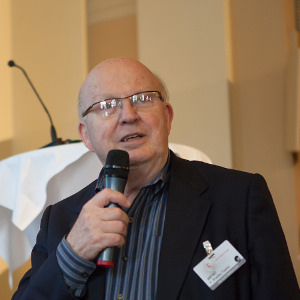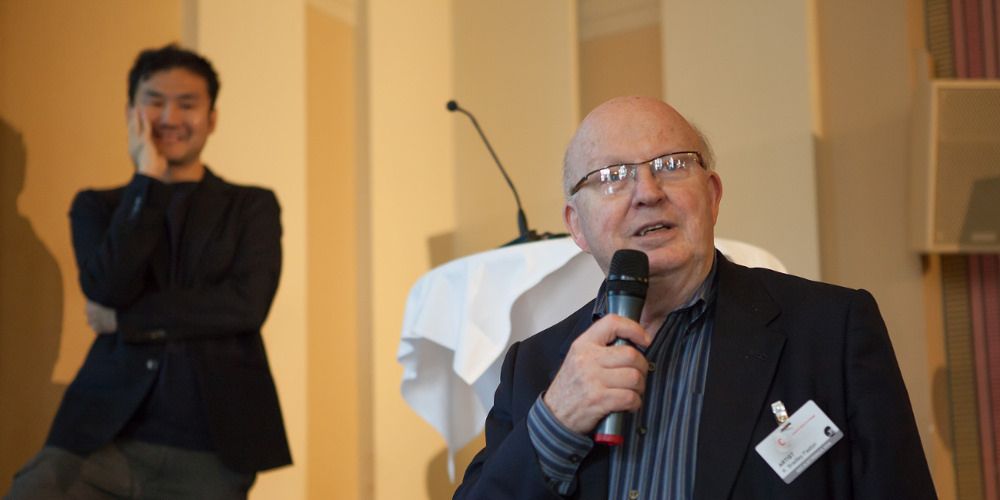 What does it take to change? This question was the focal point at the Future Innovators Summit staged jointly by Hakuhodo, ITU Telecom (International Telecommunication Union) and Ars Electronica at 2014 Ars Electronica Festival. The pathfinders – innovators active in a broad spectrum of fields and disciplines – are the catalysts of change. Among others this “Future Innovators” were accompanied by the photographer Oliviero Toscani, head of DG-Connect Robert Madelin, Hiroshi Ishii from MIT Medialab, Joachim Sauter from Art+Com and the artist and scientist Golan Levin from Carnegie Mellon University.
What does it take to change? This question was the focal point at the Future Innovators Summit staged jointly by Hakuhodo, ITU Telecom (International Telecommunication Union) and Ars Electronica at 2014 Ars Electronica Festival. The pathfinders – innovators active in a broad spectrum of fields and disciplines – are the catalysts of change. Among others this “Future Innovators” were accompanied by the photographer Oliviero Toscani, head of DG-Connect Robert Madelin, Hiroshi Ishii from MIT Medialab, Joachim Sauter from Art+Com and the artist and scientist Golan Levin from Carnegie Mellon University.
The opening speech on day two of the Future Innovators Summit was delivered by K. Bradley Paxton, former director of the Electronic Imaging Research Laboratories at Eastman Kodak. He gave a first-hand account of paths to innovation and what can go wrong along the way.
We met him after his speech and talked to him about his book „Pictures, Pop Bottles, and Pills“, his vision of future imaging and about the projects of the Future Innovators. There we learned an essential message: „Innovation never stops.”
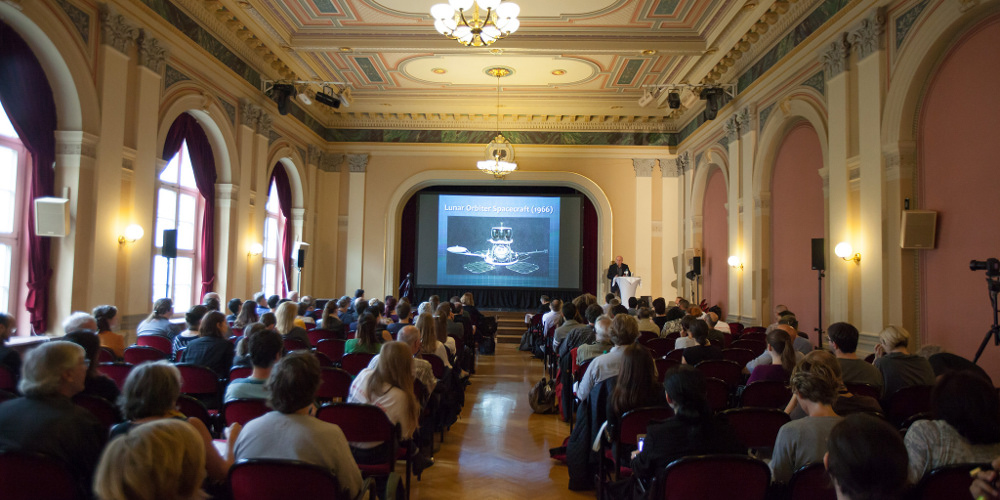 Mr. Paxton, you wrote a book about how Kodak‘s technology changed the world. Can you please tell us more about this?
Mr. Paxton, you wrote a book about how Kodak‘s technology changed the world. Can you please tell us more about this?
K. Bradley Paxton: The book is called „Pictures, Pop Bottles, and Pills“ and I wrote about all these great imaging technologies, what you take for granted today. For example, you couldn’t take pictures with an iPhone without all the Kodak technologies. There are the colour filter arrays, the CCDs (note: short for charge-coupled device), the demo sensors and so on. The whole electronic imaging evolved from Kodak and changed the world in some way.
The other thing is, I mentioned in the book that Kodak helped develop the JPEG. We use it every day. The picture comes with “.jpg” at the end and Kodak helped develop that.
The Kodak Lunar Orbiter Camera took pictures of the moon, so the Apollo 11 safely landed on the moon and came home and there are many other examples, like the Hubble telescope, where we helped fixing a mirror.
There are many other examples in the book, but the point is, that innovation never stops. It continuous to evolve and all new innovations automatically build on that what was before and so it is constantly growing and changing. So the book is about that and it’s about Kodak struggle to deal with that. They unfortunately didn’t deal with that. The point of my book is: the world is better, because of the innovations and you all enjoy them today.
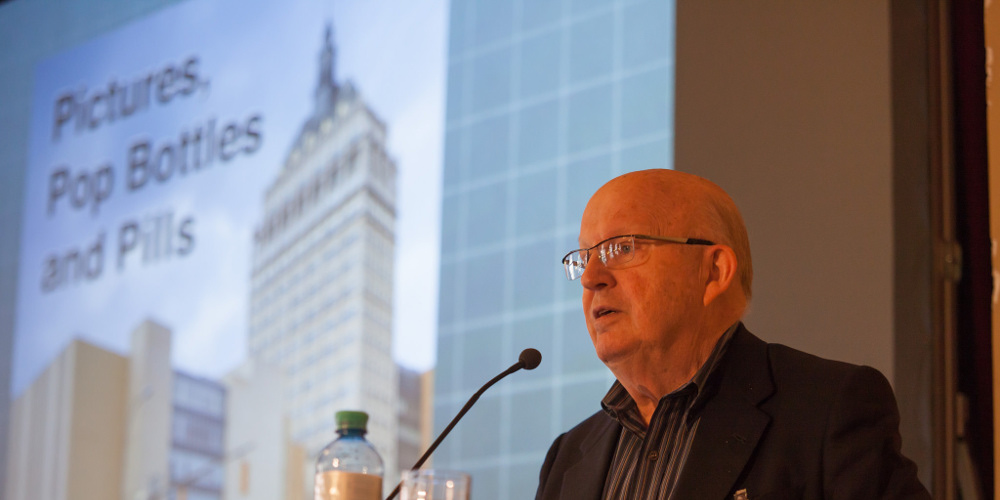 How do you think pictures or cameras will look like in the future?
How do you think pictures or cameras will look like in the future?
K. Bradley Paxton: I have another whole talk of future innovations in imaging. There is a gigapixel, a panoramic picture in 360° degree and there are drones. We just flew a drone over the George Eastman House, the world’s oldest museum dedicated to photography, where George Eastman, the founder of Eastman Kodak Company lived. The first time this ever happened to take a panoramic picture of the Eastman house from up in the air from an automatic drone camera. And we looked at the pictures on a high resolution electronic display with LEDs – which are also invented by Kodak – and if you haven’t seen an organic LED display before it is going to be spectacularly beautiful.
Also cameras in smartphones will develop. There is going to be an optical zoom lens, 3 CCDs – one for each colour and what that means is that the cameras in smartphones are going to become just like a big Nikon with a zoom lens, except in a little smartphone. And so you will be able to choose between an optical and a digital zoom, take a headshot way across the stadium and get beautiful high resolution results.
And then there is also 3D imaging and there are the things the Future Innovators do: Imaging and technology related to people and computers bringing them together.
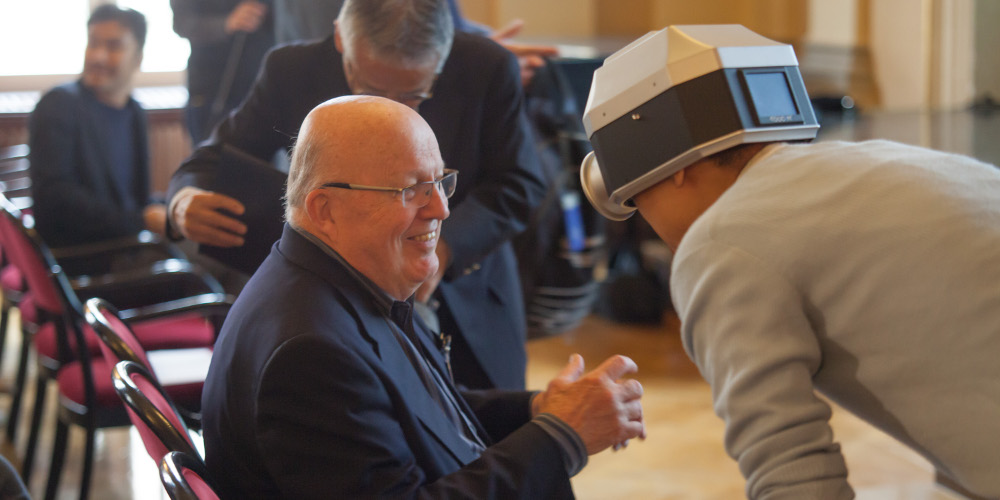 What do you think about the projects of the Future Innovators?
What do you think about the projects of the Future Innovators?
K. Bradley Paxton: Their projects are wonderful. It’s inspiring to see them, because they are trying to create a new paradigm of people and computers working together in a more seamless way. I mean someday we probably won’t have keyboards any more. Then we will say: “Remember when we had keyboards?” My wife doesn’t want a keyboard on a computer. She just wants to talk to it. She just wants to say: “Get my file” or “Send an e-mail to Debby”. She doesn’t want to type and that’s the way it’s going to go.
It’s got to make it easier for people to use the technology and that’s what the Future Innovators are doing. They are talking about all this innovator ways. And I know some people will look at this things and say: “What is that?”, but that’s the way all innovations look at the beginning. Everybody thought the 1975 digital camera from Kodak, which was the first digital camera in the world, was crazy. Not! It was such a big thing with 30 pounds and nobody wanted that, but it was the first one and all further built on this technology. So, that’s the whole point. Get to start, take your looks and then you have to continue, no matter what. Innovation is never going to stop. It continuous.
